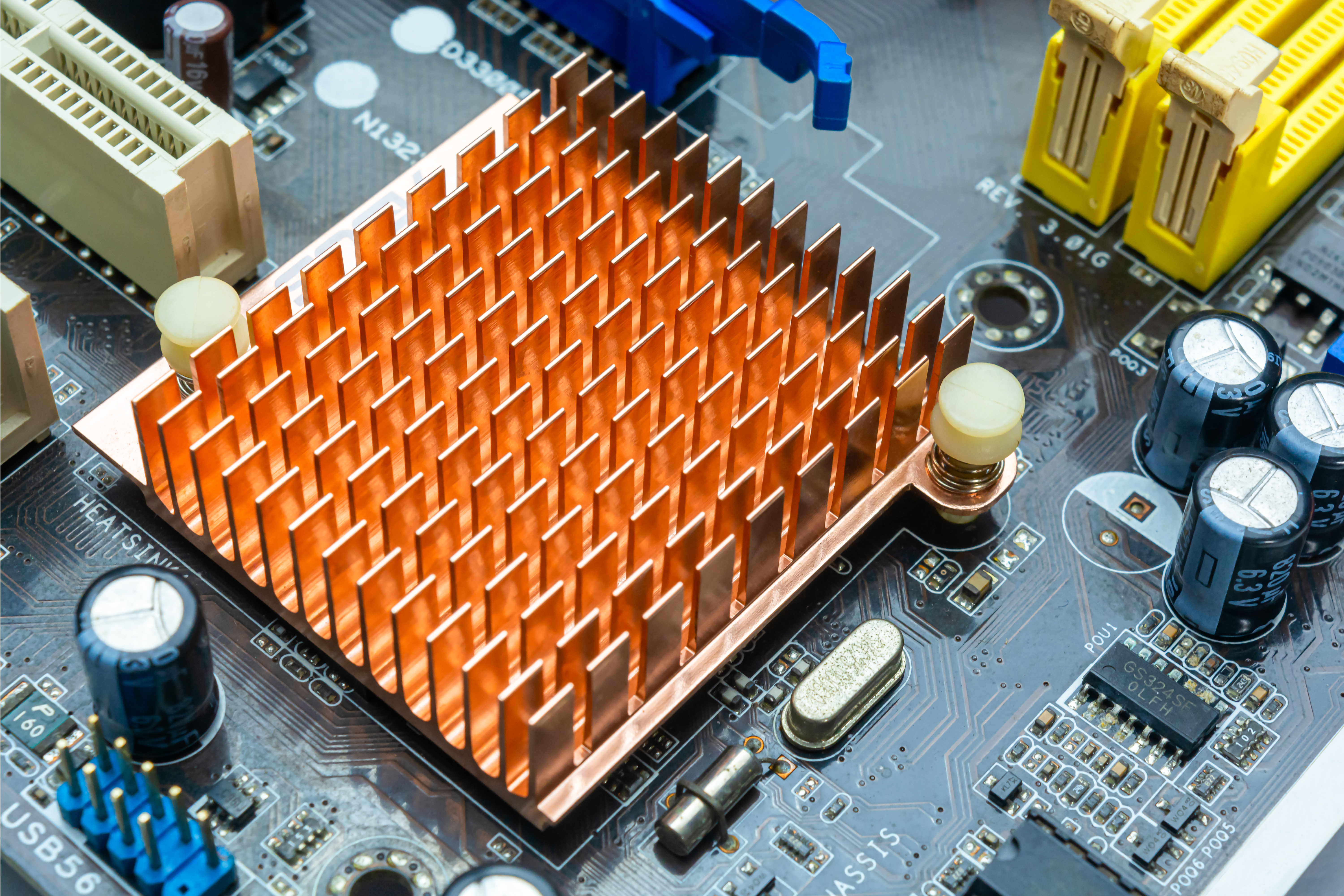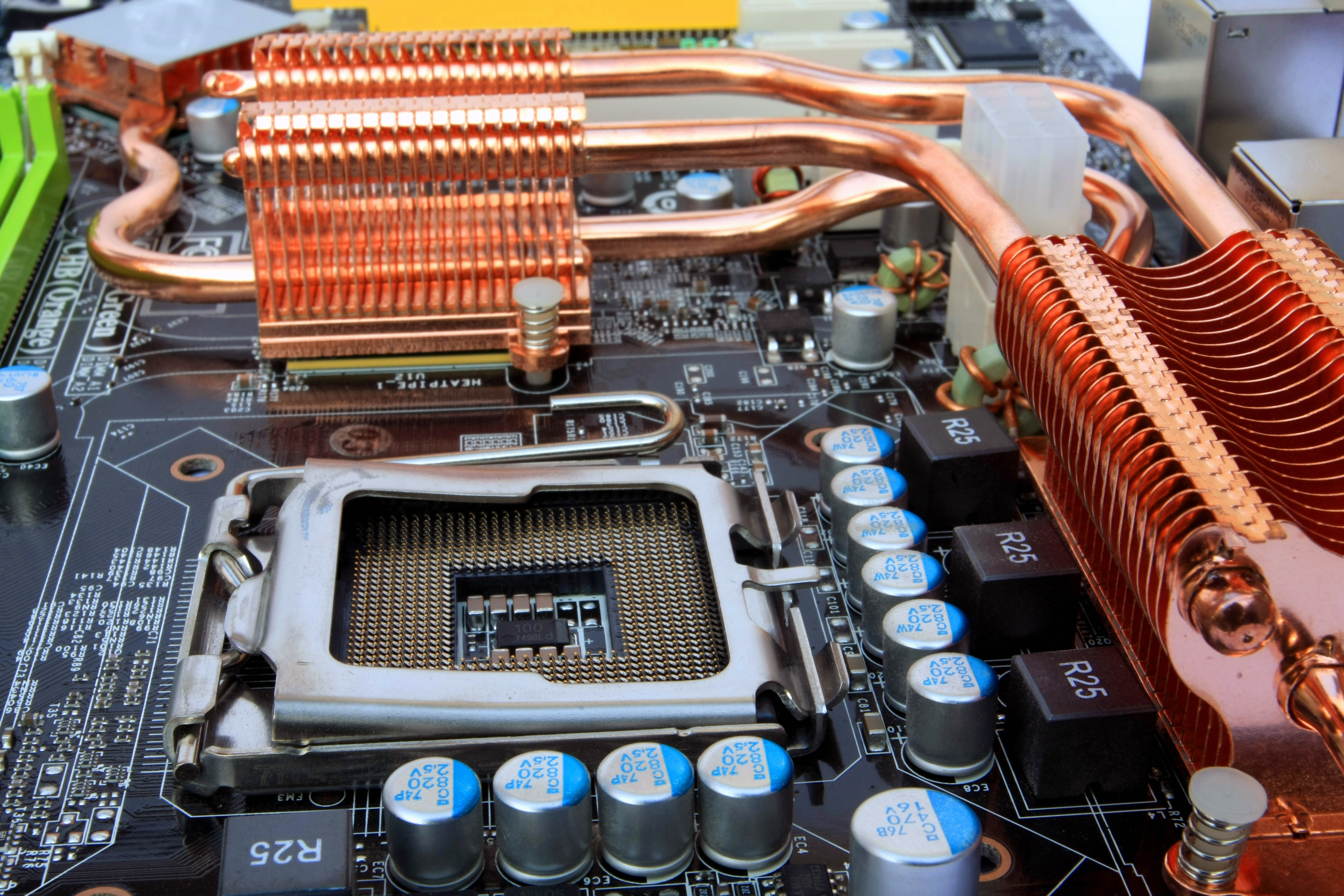Types and Characteristics of Heat Dissipation Materials and Components
An explanation of the characteristics of heat dissipation materials and components and important points to note
When incorporating electronic components such as SoCs that produce a high amount of heat when installed on a high density board, measures must be taken to dissipate that heat so as to prevent those components from failing or malfunctioning. There are a variety of specialized components and materials that help to dissipate heat, and each of them has their own particular set of characteristics. We detail a variety of types of heat dissipation components and materials and their advantages and disadvantages.

See 11 related fields
INDEX
- Materials Used for Heat Dissipation Components
- Heat Dissipation Components
- High Heat Dissipation Performance Vapor Chamber for Use in Confined Spaces
Materials Used for Heat Dissipation Components
The basic principle of heat dissipation measures for electronic components is quickly dispersing the heat over a large volume of space. The dispersed heat is eventually transferred off into the air but since air does not let heat transfer into it easily (due to low thermal conductivity), it is essential to be able to transfer however much heat from a source as quickly and extensively as possible. Heat dissipation components come in a variety of shapes such as plate shapes, needle-like or bellows-like shapes (heat sinks), sheet shapes (film), and pipe shapes, and the most commonly used materials for them are metals, ceramics, and graphite.
Metals
Metals are often used for heat sinks and plate shaped dissipation components called heat spreaders. Thermal conductivity varies depending on the type of metal used, but the most common are copper and aluminum. Copper, in particular, has the 2nd highest thermal conductivity after silver, and has the advantages of being relatively easy to obtain and process. It is also used for heat pipes as well as in Vapor Chambers. Aluminum on the other hand does not have as high of a thermal conductivity as copper does, but in addition to being comparable in terms of obtaining and processing, it has the advantages of being light-weight and rust-resistant. A disadvantage of copper and aluminum is that they are electric conductors. Careful consideration must be made so as to not cause short-circuits in the electronic circuits or component leads by accidental contact.
Ceramics
Similar to metals, ceramics are also used for heat sinks and plate shaped heat dissipation components. The thermal conductivity of ceramics varies greatly depending on the raw material used for their construction, but the thermal conductivity of ceramics that are made from aluminum nitride, while lower than that of aluminum (metal), is comparable to that of silicon or carbon. Other advantages include a high degree of insulation and a low degree of thermal expansion. Disadvantages of ceramics include the inability to be made as thin as metal, and that they are weak to impact forces (brittleness).
Graphite
Graphite is a substance made up of layers of carbon atoms arranged in a pattern. Its advantages include a thermal conductivity several times more than that of aluminum and copper, a lighter weight than aluminum, and that it is very flexible. Its thermal conductivity is high along the plane of its layers (horizontal direction), and low in the direction where the layers overlap (vertical direction), and it is processed into a graphite sheet (film) which is used as a heat dissipation component. Just like in the case with metal, it is a good conductor, so careful consideration must be made so as to avoid short circuits when being used in electronic devices.
Heat Dissipation Components
Heat dissipation components are components that take advantage of high thermal conductivity that is a characteristic of the above-mentioned heat dissipation materials, and components with structures or features that further improve the efficiency of heat dissipation, like heat pipes and Vapor Chambers.
Heat Sinks
Heat sinks have a flat surface in contact with a heat source on one side and release heat into the air through heat transfer on the opposite side which can have a bellows type structure of an array of thin plates (fins), or a needle type structure with an array of many rods. They are mainly made out of aluminum, copper, or ceramic material. The larger the surface area used for heat transfer (for contact with more air), the greater the heat dissipation performance, so it is necessary to give them some amount of space. Fans may also be installed to force air to flow through.
An example of a heat sink installation
|
|
Graphite Sheets
Graphite sheets are flexible sheets that are affixed to sources of heat to diffuse it through heat transfer horizontally along the plane of the sheet. Their structure is like that of a sandwich made of graphite with a high thermal conductivity in between layers of resin film. They are thin so they can dissipate heat in narrow spaces.
Heat Pipes
Heat pipes are pipe-shaped heat dissipation components that are made of metal (generally copper) with a small amount of working fluid (pure water, etc.) sealed inside. They work by having the working fluid in an area in contact with a heat source, causing it to vaporize, removing the heat and transferring it to an area with a lower temperature where the vapor returns to a liquid form, releasing the heat. The newly liquefied working fluid returns to the area with heat source by the principle of capillary action through a structure in the pipe called a wick, after which it vaporizes again and repeats the cycle. The circulation of the fluid is quick and continuous, and heat pipes have much better heat dissipation performance compared with heat sinks or graphite sheets.
An example of a combination of heat pipes and heat sinks
|
|
Vapor Chambers
Vapor Chambers are metal (mostly copper) heat dissipation components that are almost identical to heat pipes in terms of fundamental operating principle, structure, and heat dissipation performance, but are belt-shaped rather than pipe-shaped. Inside the metal plates (belts), there are many grooves and wicks in which a working fluid is sealed. If a heat pipe is made too thin (flattened) or bent too much, it will have an effect on its heat dissipation performance so this limits the feasible mounting locations and shapes to a certain extent. Vapor Chambers on the other hand can be made with extremely thin widths of 0.25 ~ 0.20 mm making them effective in dissipating heat even in small, confined spaces.
TIM(Thermal Interface Materials)
A Thermal interface material (TIM) is a material that can increase the thermal conductivity of heat dissipation components such as heat sinks, heat pipes, and Vapor Chambers by filling the gaps that exist between those components and heat sources such as electronic components. Even a small gap of air will reduce the heat dissipation performance as air has a very low thermal conductivity. The above-mentioned graphite sheets are adhered to the heat sources directly, so they do not need TIM, but that is not the case for heat sinks, heat pipes, and Vapor Chambers which do indeed benefit from the performance improvements bestowed by TIM.
Thermally Conductive Grease (Thermal Grease)
Thermally conductive grease is a TIM consisting of a viscous liquid resin mixed with a fine powder (filler) of metals or ceramics with a high thermal conductivity. It is easy to manage and is often used in the installation of heat sinks on the ICs which act as heat sources for electronic circuits. When used over a long period of time however, the performance of thermal grease may deteriorate as it flows out from the gaps, or its ingredients volatilize. There is also a similar TIM that is even more viscous called thermal putty which does not drip off easily.
An example of the use of thermal grease
|
|
Thermally Conductive Adhesives
A thermally conductive adhesive is a TIM consisting of an adhesive mixed with fine powder (filler) of metals or ceramics. While they are used to increase heat dissipation performance at the same time as fixing the heat dissipation components into place, a drawback is that they may be difficult to remove at a later time.
Thermal putty
Thermal putty is a TIM with the characteristic that it is more viscous than grease so it can be applied in easy-to-work lumps and used in a variety of locations and spaces.
Solder
Metal solder that melts at relatively low temperatures can also be used as TIMs. Its thermal conductivity is extremely high so heat transportability can be greatly increased when solder is inserted between the IC heat sources and the heat sinks.
Thermally Conductive Sheets
Thermally Conductive Sheets are sheets of a resin material filled with a thermally conductive filler and are used as inserts between ICs and the heat sinks. Not only is it easy to control their thickness, which is an important characteristic for TIMs, they also have excellent shape control and stable performance.
High Heat Dissipation Performance Vapor Chamber for Use in Confined Spaces
In order to address heat dissipation solutions for miniature, high-performance electronic devices, DNP has applied their in-house ultra-fine 10 micron precision processing technology to create a Vapor Chamber with a thickness of 0.20mm where working fluid can pass through fine flow channels and a capillary structure on a thin copper plate. In addition to the excellent general characteristics of Vapor Chambers such as extremely high thermal conductivity, thinness, and light weight, this Vapor Chamber is flexible and can be applied to curved or graded surfaces, making it suitable for conditions where other heat dissipation components are difficult to implement.(Information as at Feburary,2022)
|
|
Other columns and featured articles
-
Thermoelectric Cooler Module
- Precision Devices and Components
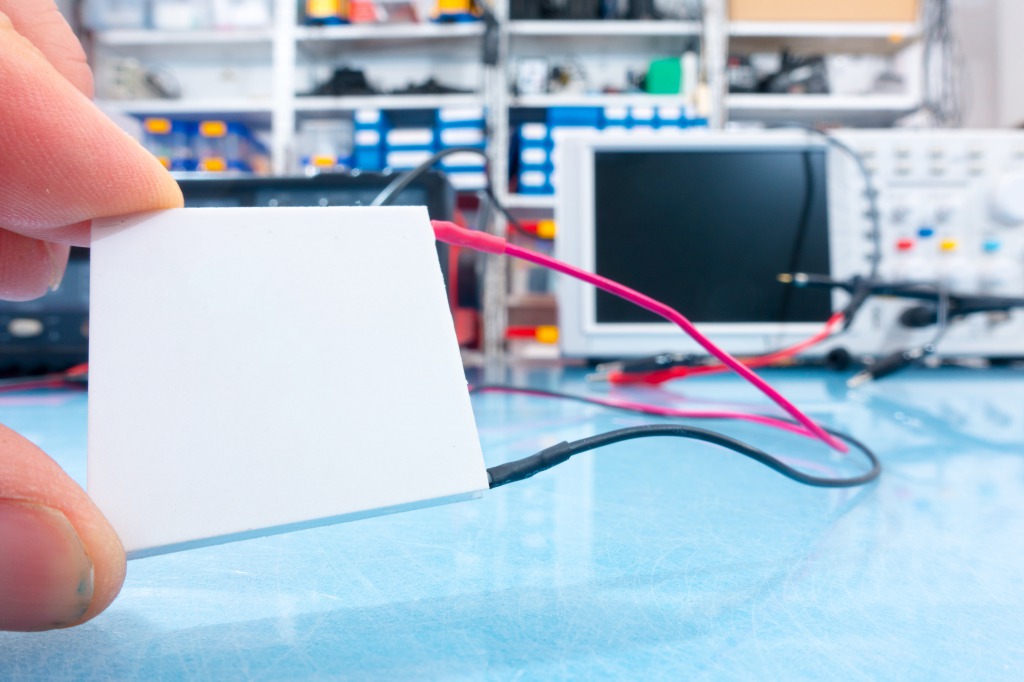
Learn more about thermoelectric cooler modules in this article. This article will answer the followi...
-
The Basics of Fanless Cooling Technology
- Precision Devices and Components

Find all of the essential information you need on fanless cooling technology. When a computer is ope...
-
Basics of Thermal Dissipation - Definition, Mechan...
- Precision Devices and Components

Learn more about thermal dissipation and the factors that influence it in this article. Thermal diss...
-
The Basics of Heat Pipes – Their History, Principl...
- Precision Devices and Components

What are heat pipes, how do they work, and what varieties are available? Heat pipes are characterize...
-
Laptop Heat Dissipation and Heat Management
- Precision Devices and Components

An introduction to heat dissipation components that are effective in heat management based on the pr...
-
Heat Dissipation Design Guide for Electronics
- Precision Devices and Components
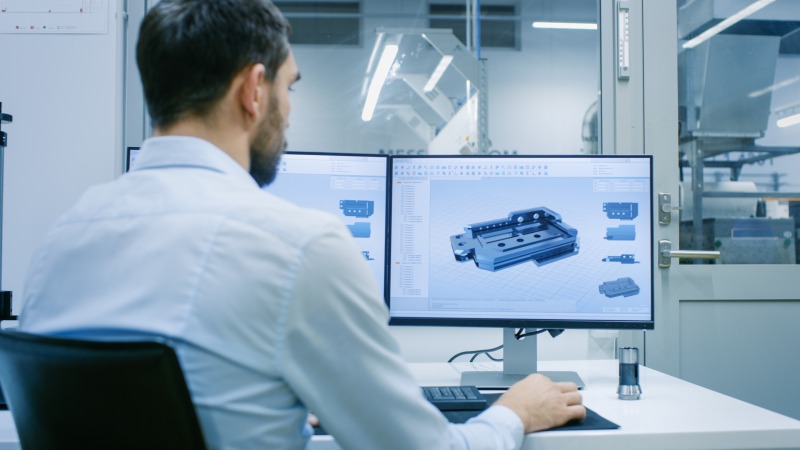
An explanation of the basics of "heat dissipation design" and how to apply it to electroni...
-
What are Heat Sinks?
- Precision Devices and Components
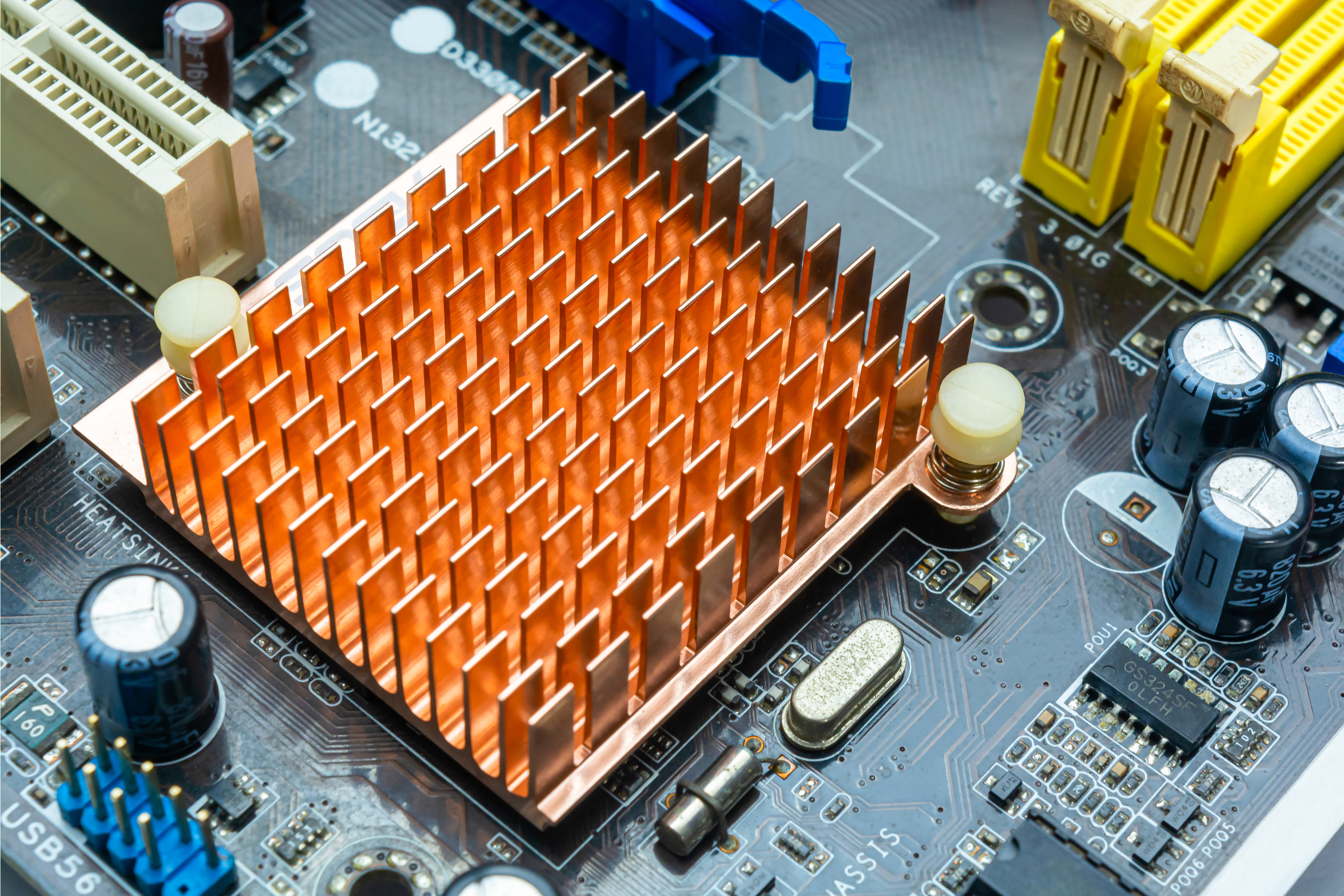
Deepen Understanding of an Essential Component for Electronics Cooling Heat sinks are indispensable ...
-
Electronics Cooling – A Review through Methods and...
- Precision Devices and Components
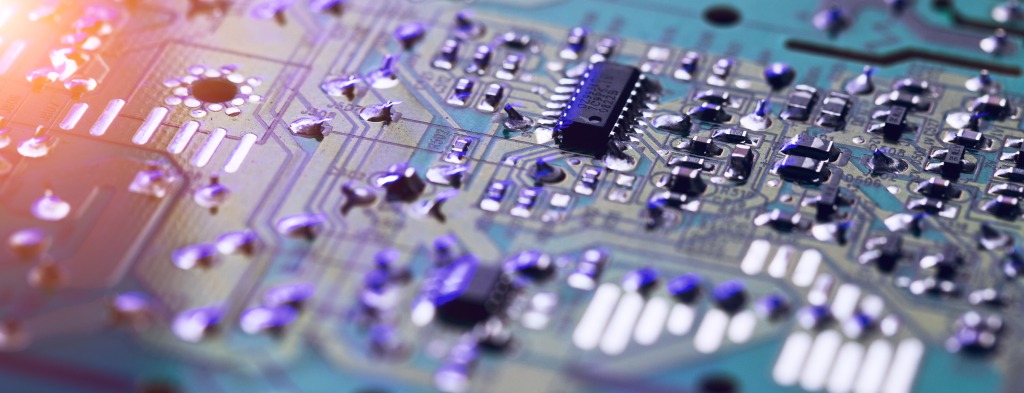
An explanation of electronics cooling methods and types of electronics cooling equipment Greater pro...
-
Heat Pipes vs. Vapor Chambers
- Precision Devices and Components

Learn differences in performance and applications between Vapor Chambers and heat pipes The latest e...
See 11 related fields
